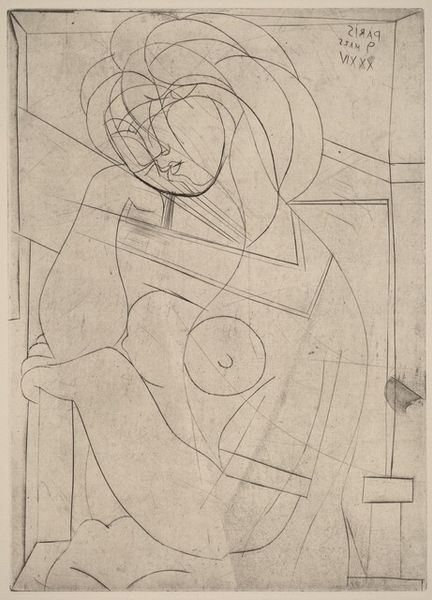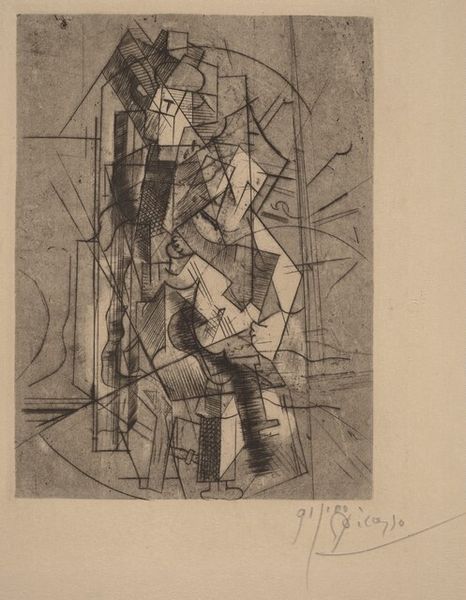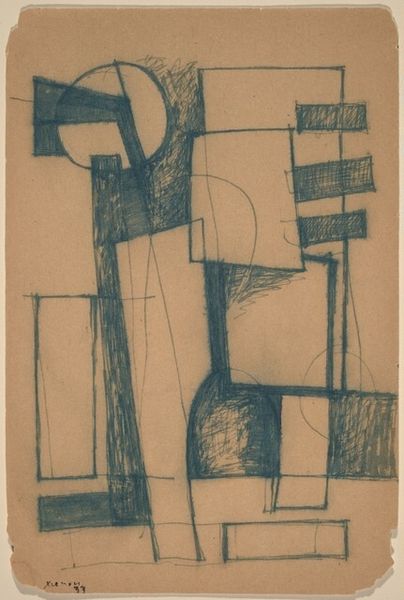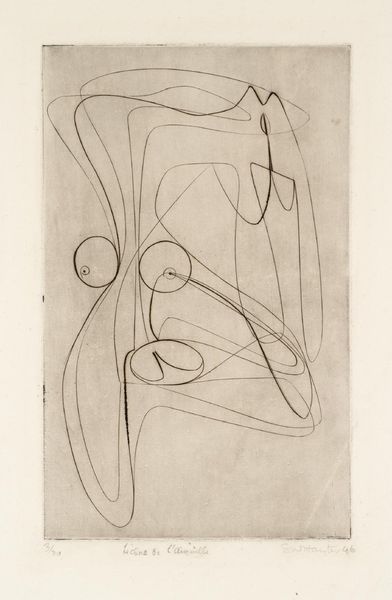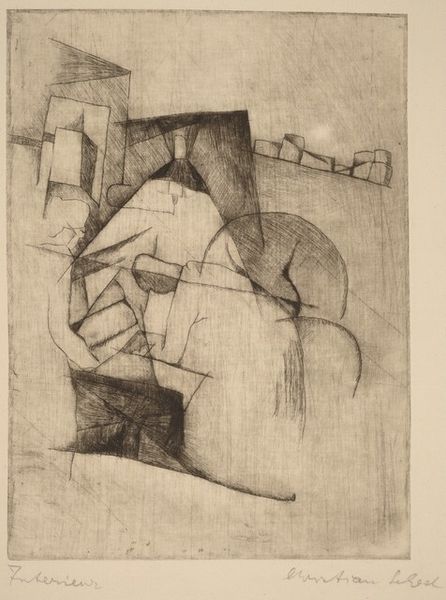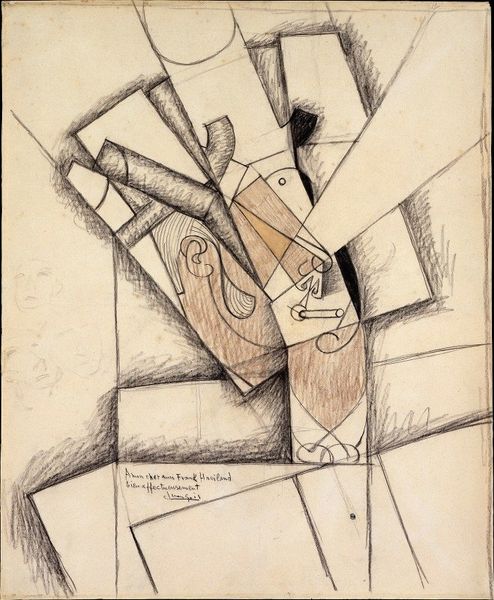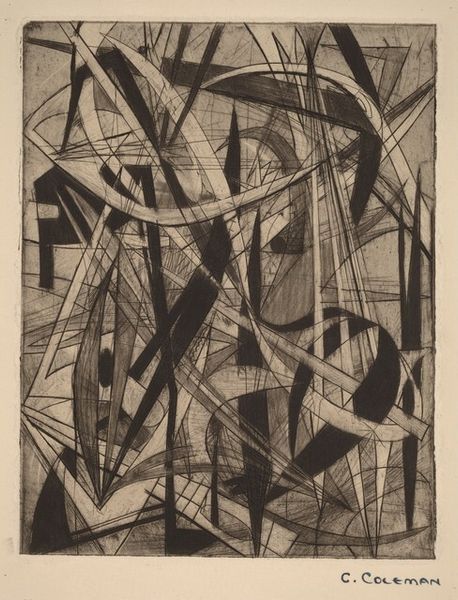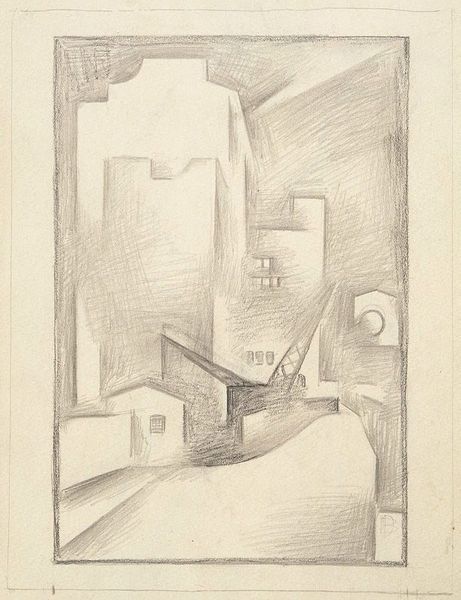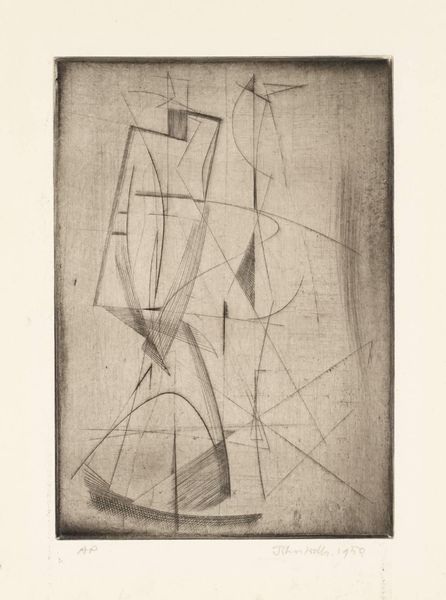
Dimensions: support: 181 x 143 mm
Copyright: The Work of Naum Gabo © Nina & Graham Williams/Tate, London 2014 | CC-BY-NC-ND 4.0 DEED, Photo: Tate
Curator: This is Naum Gabo's "Sketch for Relief Construction," currently housed at the Tate Collections. Editor: It's striking, almost architectural. The pencil lines create a sense of fragmented forms reaching outwards. Curator: Gabo was deeply interested in the materials themselves, in how industrial materials could redefine sculpture, and his work often references engineering. Editor: The geometric shapes evoke a sense of modernity, perhaps mirroring the rapid industrialization of the early 20th century, with the circle as a nod to pre-modernist symbology. Curator: Indeed, he aimed to move beyond representation, focusing on the process, on the potential of these materials to create a new visual language that reflected modern production. Editor: I see the appeal. It bridges the gap between the concrete world of industry and the abstract realm of emotion and thought. The spiral reminds me of a vortex, inviting the viewer into the dynamism of the industrial age. Curator: I agree, and considering the Russian Revolution during which the work was conceived, Gabo’s experimentation with form became a potent symbol of social change. Editor: A powerful statement encoded in graphite. Food for thought.
Comments
tate 8 months ago
⋮
http://www.tate.org.uk/art/artworks/gabo-sketch-for-relief-construction-t02151
Join the conversation
Join millions of artists and users on Artera today and experience the ultimate creative platform.
tate 8 months ago
⋮
Gabo made several constructions of this type in Russia. All have since been lost or destroyed. His earliest relief sculpture 'Head of a Woman', 1916-17 was figurative. This design appears to be completely abstract. The juxtaposition of planes and lines and the diagonal orientation of the elements have some similarity to 'Design for a Construction in a Niche', 1918 (T02152), also in this display. It is unknown if the other sketches in this display relate to specific works, or were realised as sculptures. At this time Gabo's constructions were made from plastic or wood. Some maquettes were made of cardboard. Gallery label, August 2004
